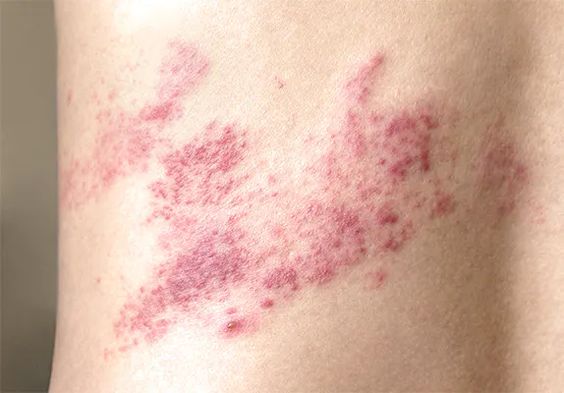A dazzling white smile can be a significant confidence booster. It's no surprise that teeth whitening has become a popular cosmetic dental procedure worldwide. This guide will explore various teeth whitening methods, their effectiveness, safety considerations, and the importance of good dental hygiene in maintaining a radiant smile.Teeth whitening is a process that lightens teeth and helps remove stains and discoloration. It's not a one-time solution; it needs to be repeated from time to time if you want to maintain the brighter color.
Why Do Teeth Get Yellow?
Teeth can lose their brightness due to various reasons, including:
Food and Drink: Coffee, tea, red wine are some major staining culprits. What do they have in common? Intense color pigments called chromogens that attach to the white, outer part of your tooth (enamel).
Tobacco Use: Two chemicals found in tobacco create stubborn stains: Tar and nicotine. Tar is naturally dark. Nicotine is colorless until it’s mixed with oxygen. Then, it turns into a yellowish surface-staining substance.
Age: Below the hard, white outer shell of your teeth (enamel) is a softer area called dentin. Over time, the outer enamel layer gets thinner with brushing and more of the yellowish dentin shows through.
Trauma: If you've been hit in the mouth, your tooth may change color because it reacts to an injury by laying down more dentin, which is a darker layer under the enamel.
Medications: Tooth darkening can be a side effect of certain antihistamines, antipsychotics, and high blood pressure medications.
Methods to Whiten Teeth
Over-the-Counter Whitening Products
OTC products can be a cost-effective way to whiten your teeth. These include whitening toothpastes, strips, gels, and trays. However, they typically take longer to show results compared to professional whitening treatments.
Professional Teeth Whitening
Professional teeth whitening is performed by dentists using high-concentration bleaching gels. This method is more expensive but offers faster and more noticeable results.
Natural Whitening Methods
Several natural methods are suggested for teeth whitening, such as oil pulling, using baking soda, and eating certain fruits. While these methods are generally safe, their effectiveness varies and is often not scientifically proven.
Effectiveness and Safety of Teeth Whitening
Teeth whitening is generally safe and effective, but it's important to follow product instructions and dental recommendations. Overuse of whiteners can damage tooth enamel or gums, so be cautious. Also, remember that teeth whitening is not permanent and requires maintenance.
Maintaining Your White Smile
Maintaining a white smile goes beyond the occasional whitening treatment. Regular dental hygiene, including brushing, flossing, and regular dental check-ups, are crucial. Also, try to avoid foods and habits that stain your teeth.
In-Depth: Teeth Whitening Methods
Let's delve deeper into some of the common teeth whitening methods.
Whitening Toothpastes and Rinses
Whitening toothpastes and rinses work by using mild abrasives and polishing agents to remove surface stains. Some products also contain a bleaching agent – hydrogen peroxide – to help remove deep and surface stains. They are generally safe for daily use, but don't expect drastic results.
Whitening Strips and Gels
Applied directly to the teeth with a brush or thin strip, these peroxide-based teeth whitening products usually need to be applied once or twice a day for 10 to 14 days. Final results hold for about four months.
Tray-Based Teeth Whiteners
Tray-based teeth whitening systems work by filling a mouth guard-like tray with a gel whitening solution – which contains a peroxide-bleaching agent – and wearing the tray for a period of time, generally a couple of hours a day to every night for up to four weeks.
In-Office Whitening
In-office bleaching provides the quickest way to whiten teeth. The whitening product is directly applied to the teeth, and combines with heat, a special light, and/or a laser. Results can be seen in just one 30- to 60-minute treatment.
Natural Teeth Whitening Methods
Natural teeth whitening methods have gained popularity as inexpensive and convenient alternatives to traditional whitening. However, it's crucial to remember that not all natural methods are safe for tooth enamel, and their effectiveness varies. Always consult with your dentist before trying new whitening methods.
Oil Pulling
Oil pulling is a traditional Indian method that involves swishing oil around in your mouth to remove bacteria, which can turn into plaque and cause your teeth to look yellow.
Brushing With Baking Soda
Baking soda has natural whitening properties, which is why it's a popular ingredient in commercial toothpaste. It's a mild abrasive that can help scrub away surface stains on teeth.
Eating Fruits and Vegetables
A diet high in fruits and vegetables may be good for both your body and your teeth. Some believe that eating pineapples and strawberries can help whiten your teeth.
Q&A Section:
Q: Does teeth whitening damage the teeth? A: Teeth whitening can cause temporary sensitivity, but it usually doesn't damage the teeth if done correctly
Q: How long does teeth whitening last? A: Teeth whitening isn't permanent. People who expose their teeth to foods and beverages that cause staining may see the whiteness start to fade in as little as one month. If you avoid these sources of staining, you may not need another whitening treatment for 6 to 12 months.
Q: Can everyone whiten their teeth? A: Not everyone's teeth can be whitened. It depends on the type of discoloration. For instance, yellow teeth may bleach well, brown teeth may not respond as well, and teeth with gray tones may not bleach at all. Whitening will not work on caps, veneers, crowns, or fillings.
Q: Is teeth whitening safe during pregnancy? A: While teeth whitening is generally safe, most dental professionals recommend that pregnant women avoid the procedure until after birth. The concern stems from potential harm to the fetus from whitening agents.
Teeth Whitening for Sensitive Teeth
People with sensitive teeth may find the teeth whitening process somewhat challenging, as many whitening methods can exacerbate sensitivity. However, there are ways to lessen the discomfort. Using a toothpaste designed for sensitive teeth can help. Some whitening products also have a formula specifically for sensitive teeth. As always, it's recommended to consult with a dentist before starting any whitening regimen.
Misconceptions About Teeth Whitening
Despite the popularity of teeth whitening, misconceptions abound. One common misconception is that whitening your teeth will damage enamel. While overuse of whitening products can damage the enamel, proper use under the guidance of a dental professional will not.
Another myth is that whitening toothpastes and DIY methods are as effective as professional treatments. While these methods may help with minor discoloration, professional treatments typically offer more drastic, reliable results.
Importance of Regular Dental Visits
Regular dental visits play a crucial role in maintaining a white, healthy smile. Dentists can provide professional cleaning, which removes plaque and tartar, a common cause of teeth discoloration. Regular check-ups also allow your dentist to monitor your oral health and promptly address issues that could affect the color and health of your teeth.
The Role of Diet in Teeth Color
The foods and drinks you consume can play a big role in the color of your teeth. Consuming a lot of dark-colored drinks, like coffee, tea, and red wine, can stain your teeth over time. Certain fruits and vegetables, like apples and potatoes, can also darken your teeth. If you're looking to maintain a white smile, consider adjusting your diet to reduce the consumption of such foods and drinks.
Teeth Whitening: A Boost to Your Confidence
While teeth whitening is largely a cosmetic procedure, the benefits go beyond aesthetics. A bright, white smile can boost your self-confidence, helping you feel more comfortable in social or professional situations. Whether you're meeting someone for the first time, giving a presentation at work, or posing for a photo, you can smile confidently knowing your teeth are at their brightest.









